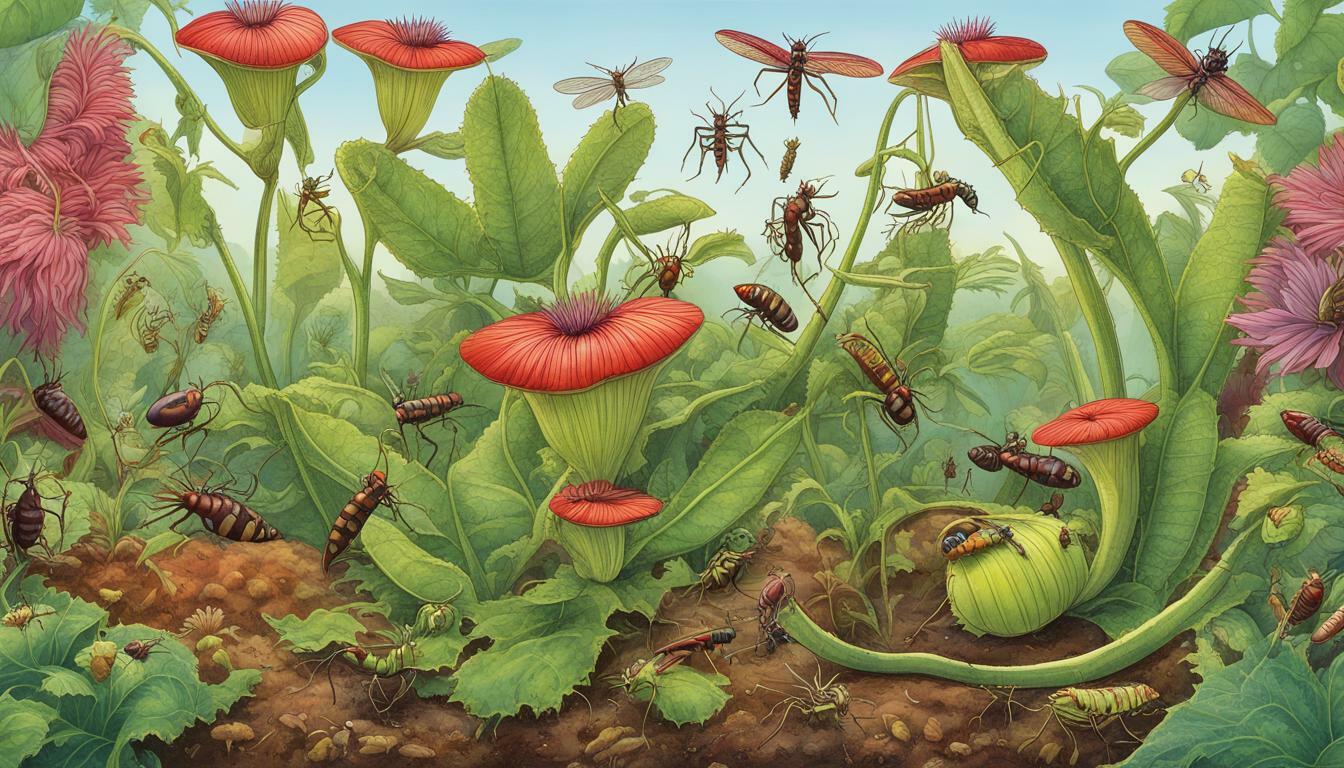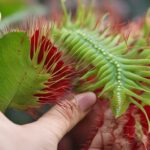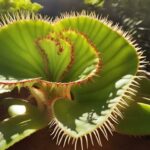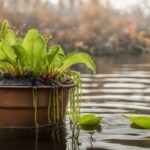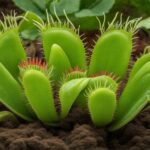If you’re the proud owner of a Venus flytrap, you may be wondering how often you should feed it. These carnivorous plants are fascinating to watch, but they have unique dietary needs that must be met for their health and survival. In this section, we’ll explore the feeding habits and requirements of Venus flytraps, including their diet and feeding frequency.
Key Takeaways:
- Venus flytraps are carnivorous plants that require a specialized diet to thrive.
- Their diet primarily consists of small insects, such as flies, ants, and spiders.
- Venus flytraps have evolved unique trapping mechanisms to capture and digest their prey.
- Establishing a proper feeding schedule is important to ensure the health and well-being of Venus flytraps.
Venus flytrap feeding habits
Venus flytraps are fascinating carnivorous plants that have evolved unique trapping mechanisms to capture and digest their prey. Understanding their feeding habits is crucial to their survival and overall health.
Unlike other plants that rely on photosynthesis to produce their food, Venus flytraps need to consume small insects, such as flies, ants, and spiders, to obtain essential nutrients like nitrogen and phosphorus.
Once an insect lands on the Venus flytrap’s leaves, the plant’s sensitive trigger hairs are stimulated, causing the leaves to snap shut, trapping the insect inside. The plant then releases digestive enzymes that break down the insect’s body, allowing the Venus flytrap to absorb the nutrients it needs.
When it comes to meal frequency, Venus flytraps do not require frequent feeding. In fact, overfeeding can be harmful to their health. These plants can go up to two weeks without a meal, depending on their size and growing conditions.
It’s important to note that Venus flytraps will only consume living prey that is small enough to fit inside their traps. They cannot consume dead insects or larger prey like mice or birds.
To ensure your Venus flytrap remains healthy, observe its feeding habits and provide supplemental feeding only when necessary.
Venus Flytrap Diet
Venus flytraps are carnivorous plants, which means they require a specific diet to survive and grow. Their primary source of nutrition is from small insects, such as flies, ants, and spiders.
Insects are attracted to the sweet nectar that Venus flytraps secrete. Once an insect lands on the plant, the leaves snap shut, trapping the insect inside. The plant then secretes digestive enzymes that break down the insect’s body and extract the necessary nutrients, such as nitrogen and phosphorus.
It’s important to note that Venus flytraps do not require large quantities of insects to thrive. In fact, overfeeding them can harm their health. It’s recommended to feed them no more than one to two insects per week, or one large insect every two weeks.
Venus flytraps may also consume small crustaceans, such as springtails, and even small slugs or snails on rare occasions. However, they should never be fed food that is too large for them to digest, such as pieces of meat or fruit.
To ensure your Venus flytrap is receiving the proper nutrition, it’s essential that you understand their feeding requirements and provide them with a balanced diet. If you’re unsure about their dietary needs or have any concerns, consult with a plant expert or do extensive research on the topic.
Feeding schedule for Venus flytraps
Establishing a proper feeding schedule is crucial for the health and well-being of your Venus flytrap. These carnivorous plants rely on insects for their nourishment, and their feeding habits may vary depending on several factors.
So, how frequently should you feed your Venus flytrap? As a general rule, adult Venus flytraps require a meal every 2-3 weeks during their growing season (spring to fall) and may not require feeding during their dormant season (winter). However, juvenile plants may require more frequent feeding, up to once a week, to support their growth.
It’s important to monitor your Venus flytrap’s condition and adjust the feeding frequency based on its growth rate, health, and environmental factors. For example, if your plant is growing rapidly or is exposed to bright light, it may require more frequent feedings.
When feeding your Venus flytrap, keep in mind that overfeeding can be harmful, leading to digestive issues and plant stress. Always wait until your plant has fully digested its previous meal before offering a new one.
Additionally, Venus flytraps may require supplemental feeding if they are not capturing enough insects on their own. You can offer small insects, such as fruit flies or small crickets, once a week during their growing season.
Remember, establishing a proper feeding schedule is crucial for the health and well-being of your Venus flytrap. By monitoring its condition and adjusting the feeding frequency as needed, you can help your plant thrive.
Venus flytrap feeding tips
If you are caring for a Venus flytrap, it is essential to understand their feeding requirements to ensure their health and growth. Here are some tips to help you properly feed your Venus flytrap:
- Observe your plant: Pay attention to your Venus flytrap’s behavior and appetite. If it appears healthy and active, it may not require supplemental feeding. However, if it seems sluggish or its traps are not closing properly, it may need extra nourishment.
- Choose the right prey: Venus flytraps are selective eaters and prefer small insects such as flies, ants, and spiders. Avoid feeding them larger prey that could damage their traps.
- Avoid overfeeding: While Venus flytraps may seem like they can consume a lot of insects, overfeeding can harm them. Only feed them one or two insects per week to avoid overwhelming their digestive system.
- Feed when traps are active: Venus flytraps are most receptive to food when their traps are active and open. Avoid feeding them when their traps are closed, as they may not be able to capture their prey effectively.
- Use the right type of water: When feeding your Venus flytrap, use distilled water or rainwater. Tap water may contain minerals that can harm the plant.
- Never feed them meat: Venus flytraps are carnivorous plants that rely on insects for their nourishment. Never feed them meat or other animal products as it can make them sick.
By following these Venus flytrap feeding tips, you can ensure that your plant stays healthy and thrives. Remember to always monitor their behavior to ensure they are getting the right amount of nourishment they need.
Conclusion
Now that you know more about Venus flytraps’ feeding habits and requirements, you can help them thrive in your care. Remember that these carnivorous plants require a diet of small insects, which they capture using their unique trapping mechanisms.
Establishing a proper feeding schedule is key to keeping your Venus flytrap healthy and happy. As a general rule, you should aim to feed your plant every two to three weeks during the growing season and less frequently during the dormant period. However, pay attention to your plant’s condition and adjust the feeding frequency as necessary.
If you’re unsure about your Venus flytrap’s feeding needs or have any other questions, don’t hesitate to reach out to a knowledgeable plant expert for guidance. With a little care and attention, your Venus flytrap can be a fascinating addition to your home or garden.
Is a Dormant Period Necessary for Venus Flytraps to Survive?
The venus flytrap dormant period requirements are crucial for the survival of these carnivorous plants. During this period, which typically occurs in winter, the flytraps enter a state of dormancy. This allows them to conserve energy, withstand colder temperatures, and prepare for new growth in the upcoming season. Without a dormant period, the vitality and health of venus flytraps can be compromised.
FAQ
Q: How often do Venus flytraps need to eat?
A: Venus flytraps should be fed every 1-2 weeks, depending on their size and growth rate. It’s important to provide them with enough prey to meet their nutritional needs, but avoid overfeeding as it can strain their digestive system.
Q: What do Venus flytraps eat?
A: Venus flytraps primarily eat small insects such as flies, ants, and spiders. They are carnivorous plants that rely on capturing and digesting their prey to obtain essential nutrients like nitrogen and phosphorus.
Q: Can I feed my Venus flytrap with anything other than insects?
A: It’s best to stick to feeding Venus flytraps with live insects. They have evolved to recognize the movements and chemicals produced by their prey, which triggers their trapping mechanisms. Feeding them anything other than insects may not provide the necessary stimulation for their feeding response.
Q: How do I know if my Venus flytrap is hungry?
A: Venus flytraps will show signs of hunger by closing their traps and secreting digestive enzymes. If the trap remains closed after a few days, it means the plant has successfully captured prey and is in the process of digestion. Wait until the trap reopens before feeding it again.
Q: Can I feed my Venus flytrap too much?
A: Yes, overfeeding can burden the digestive system of Venus flytraps and may lead to rotting of the traps. Stick to a regular feeding schedule and avoid providing more prey than the plant can handle. If the traps start turning black or developing a foul smell, it may be a sign of overfeeding.
Q: What happens if I don’t feed my Venus flytrap?
A: Venus flytraps can survive for a period without being fed, but they require regular meals to stay healthy and grow. If they do not receive sufficient prey, they will enter a state of dormancy. During this period, they will stop growing and may lose some leaves. It’s important to resume feeding once they come out of dormancy.

